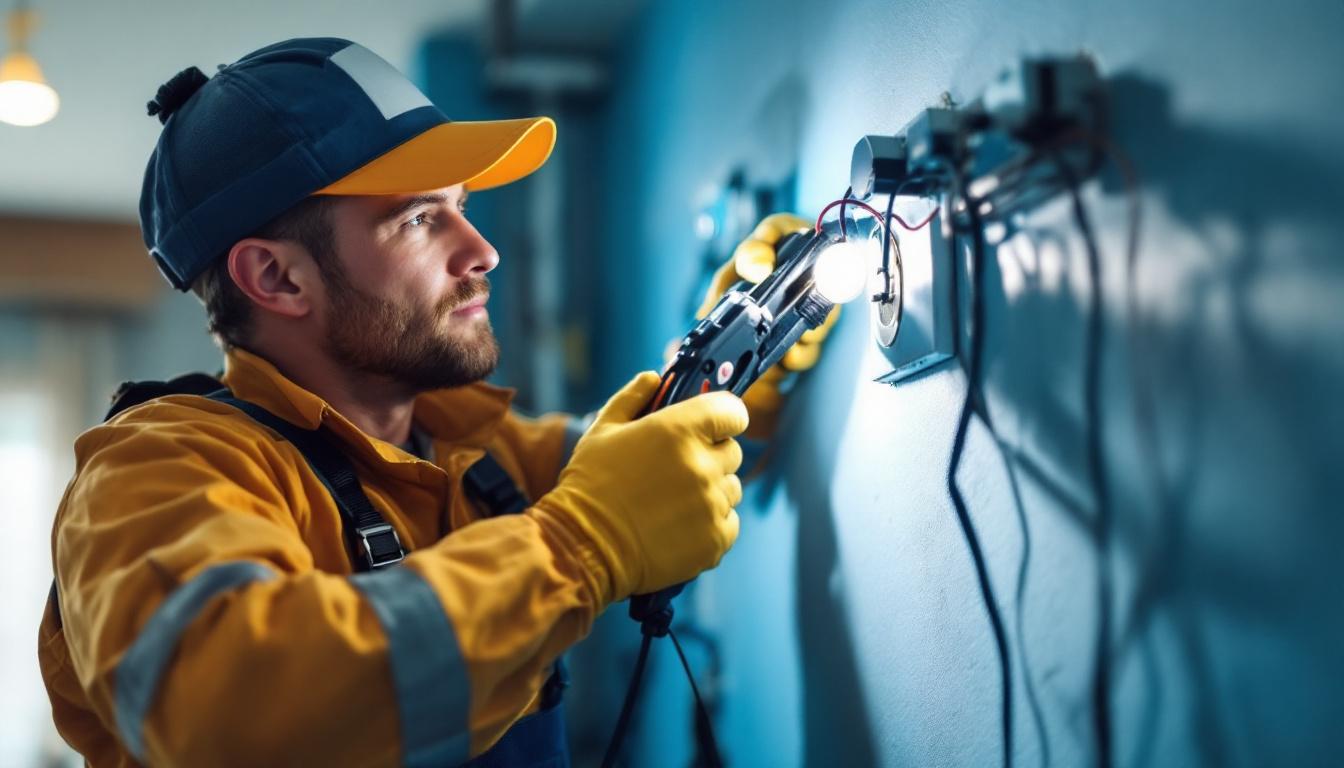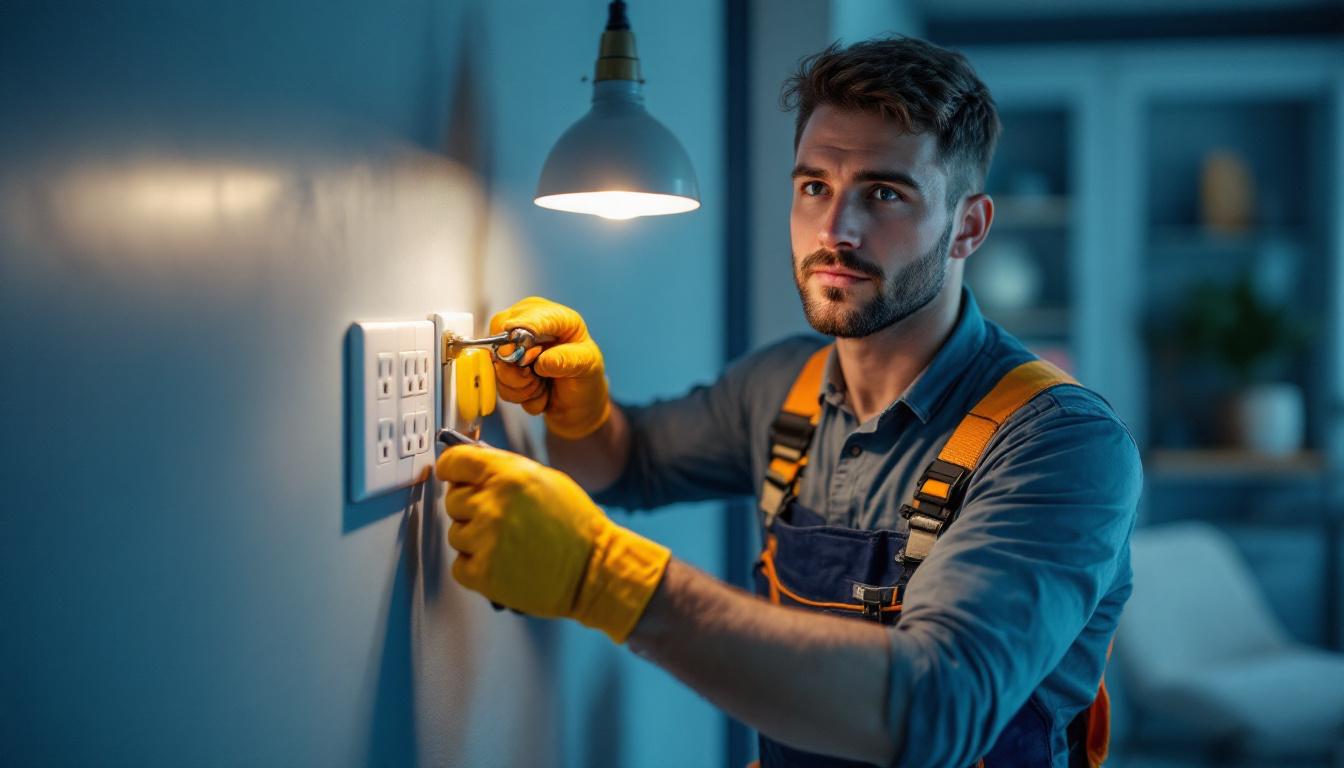
In the world of lighting installations, safety is paramount. Whether working in residential, commercial, or industrial settings, the potential hazards associated with electrical wiring cannot be overlooked. Wire running tools have emerged as essential equipment that not only streamline the installation process but also significantly enhance safety. This article delves into the various wire running tools available, their functionalities, and how they contribute to safer lighting installations.
Safety in lighting installations is crucial for several reasons. First and foremost, improper handling of electrical wires can lead to severe accidents, including electric shocks and fires. Additionally, ensuring that installations are safe protects both the contractor and the end-user from potential liabilities.
Electrical installations often involve various hazards, including exposed wires, improper grounding, and inadequate insulation. These issues can lead to short circuits or even electrocution. Moreover, poorly executed installations can result in damage to property and equipment, leading to costly repairs and downtime.
Understanding these hazards is the first step toward implementing effective safety measures. Wire running tools play a pivotal role in mitigating these risks by ensuring that wires are installed correctly and securely. Furthermore, regular inspections and maintenance of existing installations can help identify potential hazards before they escalate into serious problems. By prioritizing safety from the outset, contractors can create a more reliable and secure environment for everyone involved.
Adhering to regulatory standards is another critical aspect of safety in lighting installations. Various codes and guidelines, such as the National Electrical Code (NEC), dictate how electrical systems should be installed and maintained. Using wire running tools that comply with these standards ensures that installations meet legal requirements, thereby reducing the risk of accidents.
Contractors must stay informed about these regulations and utilize tools that facilitate compliance, ensuring that their work not only meets safety standards but also earns the trust of clients. Additionally, ongoing education and training for electrical professionals are essential in keeping abreast of the latest safety protocols and technological advancements. This commitment to continuous learning not only enhances the quality of work but also fosters a culture of safety that benefits everyone in the industry.
There is a wide array of wire running tools available, each designed to address specific challenges faced during lighting installations. Understanding the different types of tools and their functions can help contractors choose the right equipment for their projects.
Fish tapes are long, flexible tools that are essential for running wires through walls, ceilings, and conduits. Made of steel or fiberglass, fish tapes allow contractors to navigate tight spaces and corners with ease. The tape is pushed through the desired path, and once it emerges, the electrical wire can be attached and pulled back through the same route.
Using fish tapes not only simplifies the process of running wires but also minimizes the risk of damaging existing structures. This tool is particularly useful in retrofitting projects where existing wiring needs to be replaced or upgraded. Additionally, fish tapes often come with a variety of tips that can be swapped out depending on the specific needs of the job, such as hooks for grabbing wires or pointed tips for easier navigation through small openings.
Wire pullers are designed to assist in pulling multiple wires through conduits or tight spaces. These tools can significantly reduce the physical strain on contractors, allowing them to focus on the installation rather than struggling with heavy cables. Wire pullers come in various configurations, including manual and powered options, catering to different project requirements.
By using wire pullers, contractors can ensure that wires are pulled evenly and without excessive force, reducing the risk of damaging the wires or the conduit itself. This not only enhances safety but also improves the overall efficiency of the installation process. Furthermore, some advanced wire pullers are equipped with features such as built-in tension gauges, which help contractors monitor the amount of force being applied, ensuring a careful and controlled pull that safeguards both the equipment and the installation integrity.
Properly connecting wires is crucial for safety and functionality. Cable splicers and connectors are essential tools that ensure secure and reliable connections between electrical wires. These tools come in various forms, including crimping tools, soldering kits, and terminal blocks.
Using high-quality connectors and splicers reduces the risk of loose connections, which can lead to overheating and potential fire hazards. By investing in reliable tools, contractors can enhance the safety and longevity of their lighting installations. Moreover, the choice of connectors can also impact the overall performance of the electrical system; for instance, using weather-resistant connectors in outdoor applications can prevent corrosion and ensure that connections remain intact despite exposure to the elements. Additionally, many modern connectors are designed for ease of use, featuring color-coded systems or snap-on mechanisms that streamline the installation process and reduce the likelihood of errors.
Wire running tools not only improve the efficiency of lighting installations but also play a crucial role in enhancing safety. Here are several ways these tools contribute to a safer working environment.
One of the most significant benefits of using wire running tools is the reduction of physical strain on contractors. Manual wire pulling can be labor-intensive and lead to injuries such as muscle strains or repetitive motion injuries. Tools like wire pullers and fish tapes minimize the physical effort required, allowing contractors to work more comfortably and safely.
By reducing physical strain, contractors can maintain their focus and attention on the task at hand, which is essential for ensuring safety during installations. Additionally, the ergonomic design of many wire running tools helps to promote proper body mechanics, further decreasing the likelihood of injury. This focus on ergonomics not only benefits the contractors but also enhances overall productivity, as workers can complete tasks more efficiently without the fatigue that often accompanies manual labor.
When running wires, it is crucial to avoid damaging existing structures, such as walls, ceilings, and conduits. Wire running tools are designed to navigate tight spaces and reduce the risk of accidental damage. For instance, fish tapes allow for precise routing of wires without the need for extensive drilling or cutting.
By minimizing damage to structures, contractors can ensure that the installation process is not only safer but also more efficient, reducing the need for costly repairs and rework. Furthermore, using tools that protect the integrity of the building materials can enhance the longevity of the installation. For example, specialized wire guides can help direct wires through walls without compromising insulation or fire barriers, ensuring compliance with safety regulations while maintaining the building’s structural integrity.
Proper wire management is vital for safety in electrical installations. Disorganized wires can lead to tripping hazards and make troubleshooting difficult. Wire running tools help contractors maintain organized wiring systems, ensuring that cables are neatly routed and secured.
Using tools such as cable ties, clips, and conduits can further enhance wire management, reducing the risk of accidents and making future maintenance easier. A well-organized wiring system is not only safer but also reflects professionalism, instilling confidence in clients. Moreover, implementing effective wire management practices can facilitate quicker access to wiring during inspections or repairs, minimizing downtime and disruption. This proactive approach not only enhances safety but also contributes to a smoother workflow, allowing contractors to meet project deadlines more effectively.
To maximize the benefits of wire running tools, contractors should follow best practices during their installations. These practices not only enhance safety but also improve the overall quality of the work.
Like any equipment, wire running tools require regular maintenance to ensure optimal performance. Contractors should inspect tools for wear and tear, clean them after use, and store them properly to prolong their lifespan. Regular maintenance prevents unexpected tool failures that could compromise safety during installations.
Additionally, keeping tools in good condition ensures that they function as intended, reducing the risk of accidents caused by malfunctioning equipment.
Investing in training and skill development is essential for contractors to effectively use wire running tools. Understanding the proper techniques for using each tool can significantly enhance safety and efficiency. Workshops, online courses, and hands-on training sessions can provide valuable knowledge and skills.
Moreover, staying updated on the latest advancements in wire running tools and techniques can give contractors a competitive edge while ensuring the safety of their installations.
Contractors must always adhere to established safety protocols when using wire running tools. This includes wearing appropriate personal protective equipment (PPE), such as gloves, safety glasses, and hard hats. Additionally, following electrical safety guidelines, such as de-energizing circuits before working on them, is crucial for preventing accidents.
By prioritizing safety protocols, contractors can create a safer working environment for themselves and their teams, ultimately leading to more successful and secure lighting installations.
Wire running tools are indispensable assets for lighting contractors, enhancing both safety and efficiency in electrical installations. By understanding the various types of tools available and their functionalities, contractors can make informed decisions that contribute to safer working environments.
From reducing physical strain to ensuring proper wire management, wire running tools play a vital role in mitigating risks associated with electrical installations. By adhering to best practices, including regular maintenance, training, and safety protocols, contractors can maximize the benefits of these tools and deliver high-quality, safe lighting installations.
In an industry where safety cannot be compromised, investing in the right wire running tools is not just a choice; it is a necessity for every lighting contractor committed to excellence and safety.
Ready to elevate the safety and efficiency of your lighting installations? LumenWholesale is here to support your commitment to excellence with our high-quality, spec-grade lighting products. Say goodbye to inflated markups and hello to unbeatable wholesale prices. Our selection of wire running tools meets the highest industry standards, ensuring you have access to reliable, high-performance equipment for every project. Plus, with free shipping on bulk orders, you can stock up on the best lighting tools without any hidden fees. Don’t compromise on quality or value—Wholesale Lighting at the Best Value is just a click away.

Discover top-rated electrical outlets with expert insights tailored for lighting contractors.

Discover the top strategies lighting contractors use to maximize the benefits of 3500K LED bulbs.

Discover how amber LEDs are transforming the lighting industry for contractors.

Discover the essentials of Type B light bulbs with our comprehensive guide tailored for lighting contractors.